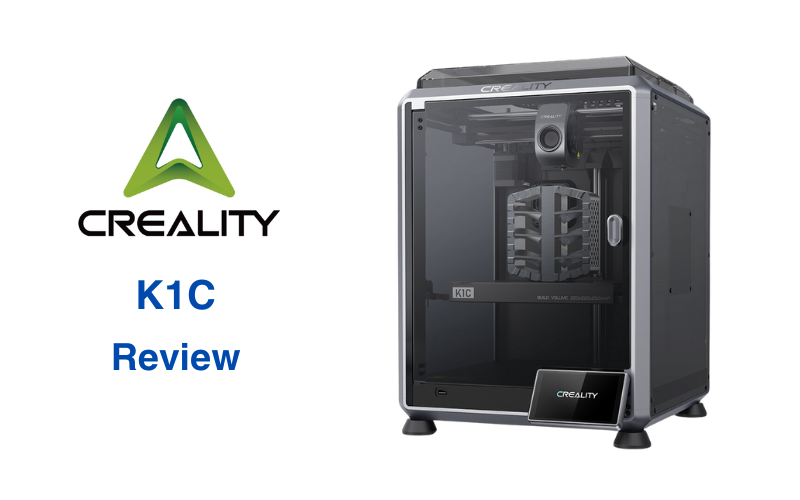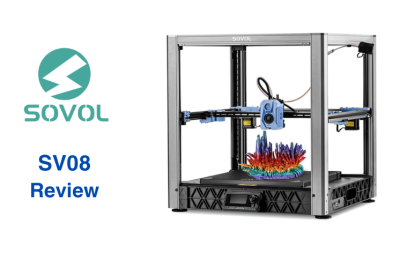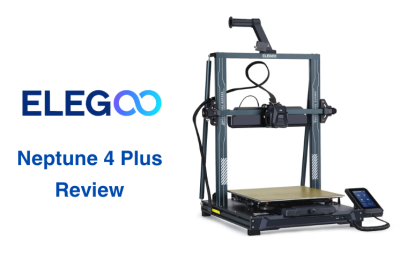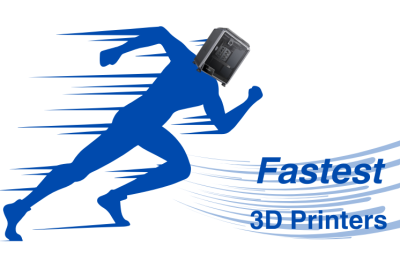Creality K1C Review
Creality started in 2014 in Shenzhen, China, with a goal to bring 3D printing to more people through affordable, innovative machines. In 2018, the Ender-3 shook up the market by offering a solid, affordable printer that DIY enthusiasts could tweak and improve. Its open-source design and strong community support turned it into a household name in 3D printing circles. Since then, Creality has steadily grown, adding printers aimed at classrooms, professionals, and creators who want faster print times or bigger build volumes.
Their lineup covers everything from the beginner-friendly Ender series to the enclosed Sermoon printers designed for plug-and-print convenience. The K1 series, introduced for users who want faster output and smart features, reflects Creality’s move toward more performance-driven machines.
This review looks at the Creality K1C, a model designed for speed and convenience. We’ll break down its design, key features, and real-world performance. This model is actually one of our picks for the Fastest 3D Printers.
Design and Build Quality
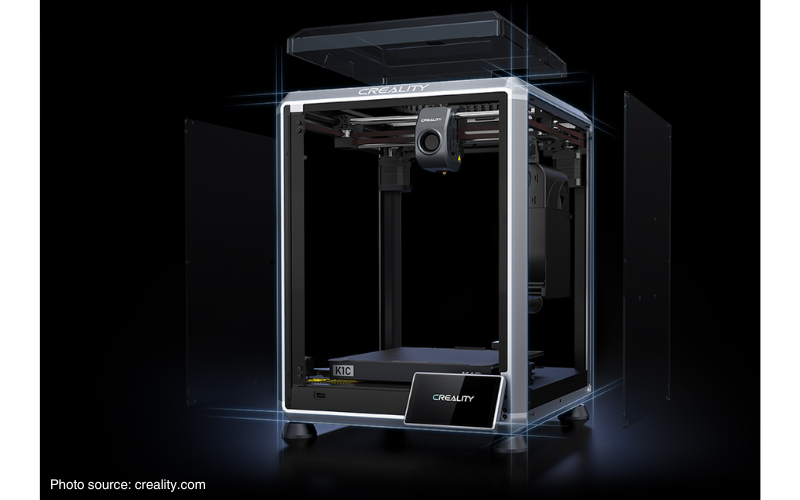
The Creality K1C is built with a die-cast frame that uses larger, solid parts and cuts down on seams. It gives the printer a stronger structure that helps reduce vibrations even when pushing speeds up to 600mm/s.
The enclosure features acrylic side panels, a top lid, and a glass front door. This setup helps keep temperatures consistent inside the chamber, which is important when working with materials that can warp. The clear panels also make it easy to see what’s happening inside without needing to open the door.
Creality didn’t just stop at the basics. They’ve added helpful details like reinforced cable chains to keep everything in place and a damped hinge for smoother door movement. The 4.3-inch touchscreen is placed right at the front for quick access, and you can 3D print the side-mounted spool holder if you want a better spot for your filament. At 12.4 kg, it’s sturdy but not so heavy that it’s hard to move around if needed. It’s built for speed, but the small details help it handle that speed with minimal fuss.
Key Features and Specifications
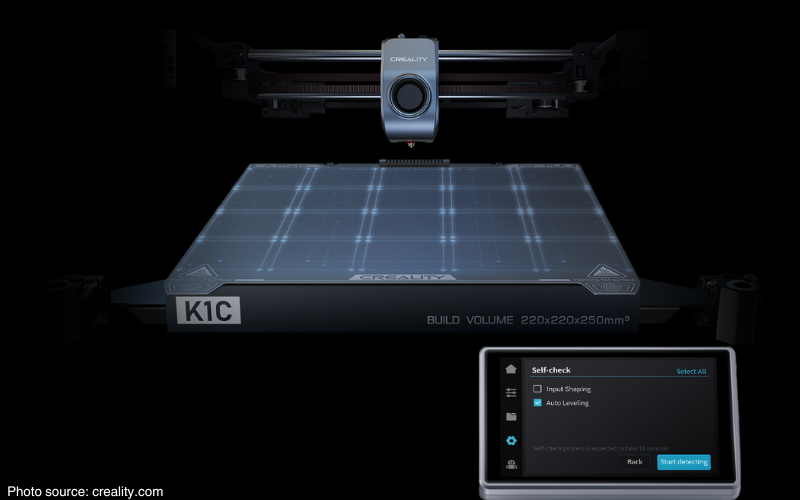
The Creality K1C has a dual-gear direct drive extruder that uses a spring-loaded setup to keep a tight grip on the filament, helping to prevent clogs and feeding problems. The nozzle is made from hardened steel with a copper core and a titanium heatbreak. This keeps the heat where it should be and avoids melting the filament too soon. Swapping out the nozzle is also quick and simple if it ever needs replacing.
The CoreXY motion system plays a big role in how the K1C handles its top speed of 600mm/s. By keeping movements lightweight and precise, the printer stays steady, even at high acceleration. Cooling is also covered with three different fans—one keeps the hotend from overheating, another hardens the filament as it’s laid down, and a third helps cool the print chamber to reduce warping or stringing on more detailed parts.
The auto calibration feature means no messing with manual leveling. Just tap a button, and the printer does the work. The built-in AI camera is handy too—it can catch spaghetti errors or foreign objects and alert you if something goes wrong while also letting you monitor prints remotely.
The K1C works with a wide variety of filaments, including carbon-fiber blends like PA-CF and PET-CF, thanks to its enclosed build chamber and 300°C hotend. The flexible PEI-coated build plate makes removing prints easy, with no scraping needed. Plus, the printer is surprisingly quiet, especially in silent mode, where it hums along at just 45dB—similar to a quiet room.
You can transfer files using USB or Wi-Fi, so it’s easy to start a print from your computer or Creality’s Cloud app. The K1C is ready for both everyday projects and more complex prints.
K1C: Fast and Sturdy
| Key Features | Specifications |
|---|---|
| Klipper-Enabled High-Speed Printing | Build Volume: 320 x 320 x 385 mm³ |
| Easy Control Color Touch Screen | Max Printing Speed: 500 mm/s (default 250 mm/s) |
| High-Temperature Extruder System | Max Acceleration: 12000 mm/s² |
| Efficient Cooling System | Max Nozzle Temperature: 300°C |
| 121-point Auto Bed Leveling System | Max Heated Bed Temperature: 110°C |
| Reliable Filament Control | Filament Compatibility: PLA, TPU, PETG, ABS, ASA, Nylon |
| PEI Magnetic Build Plate | File Transfer Methods: Wi-Fi, USB, LAN |
| Quiet Operation | File Formats: STL, OBJ |
| Frame Material: CNC-machined aluminum extrusion | |
| Printer Dimensions: 578 x 533 x 640 mm³ |
Comparisons
Creality K1C vs Bambu Lab P1P
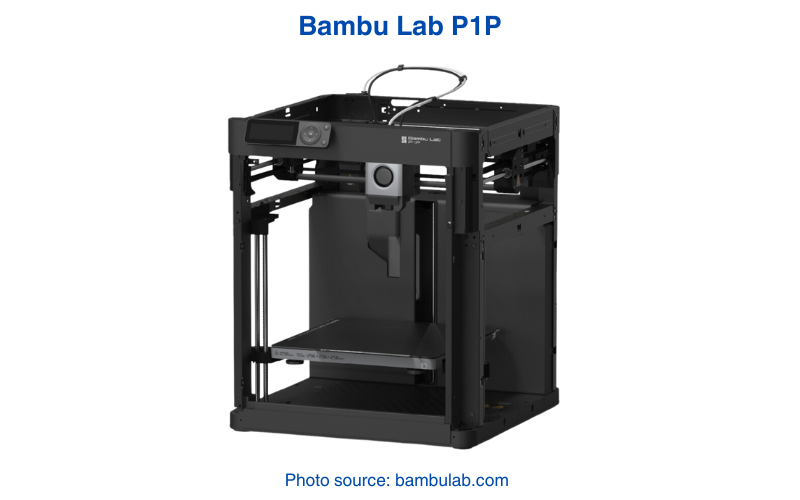
The Creality K1C and Bambu Lab P1P are both built for speed and performance. But they have some key differences in how they handle materials and convenience features.
- Printing System: Both printers use a CoreXY setup. But the K1C hits a faster max speed of 600mm/s, while the P1P tops out at 500mm/s. The K1C also has three fans working together to manage cooling, which is important with difficult filaments and reduces stringing.
- Material Compatibility: The K1C handles a wider range of materials, including carbon-fiber blends like PA-CF, thanks to its 300°C hotend and enclosed chamber. The P1P doesn’t have an enclosure, which can lead to warping when printing high-temp materials like ABS or nylon.
- Smart Features: The K1C comes with a built-in AI camera for catching print errors and monitoring remotely, while the P1P requires an add-on for this feature. That makes the K1C more ready for remote monitoring right out of the box.
Creality K1C vs Prusa MK4
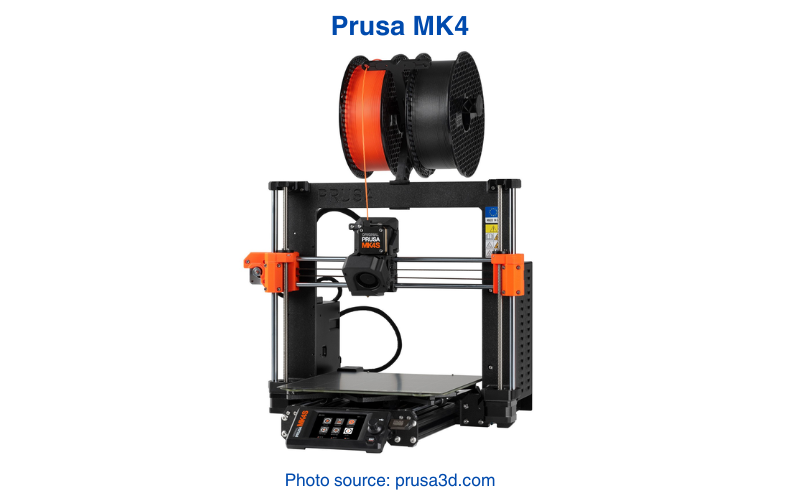
The Creality K1C and Prusa MK4 both aim for fast, reliable prints, but they go about it differently.
- Printing System: The K1C uses a CoreXY design to hit speeds of up to 600mm/s with quick acceleration. The MK4 sticks with a standard Cartesian system. But they added input shaping and vibration control to keep prints sharp even at higher speeds.
- Material Support: Both printers handle everyday filaments like PLA and PETG, but the K1C’s 300°C nozzle and enclosed chamber make it better for tougher materials like ASA and carbon-fiber blends. The MK4’s open design works fine for basics but can struggle with high-temp filaments without an enclosure.
- User Experience: The MK4 is known for its polished Prusa interface and remote management with Prusa Connect. The K1C uses Creality Cloud for remote control and comes with a built-in AI camera for monitoring prints and recording time-lapses.
Real World Applications
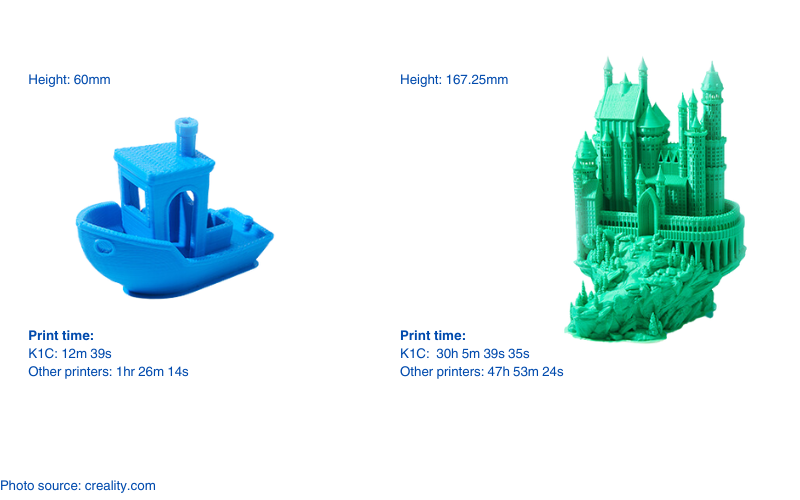
- Prototyping and Functional Parts: The K1C’s fast print speeds and support for tough materials like carbon-fiber blends make it a solid choice for printing functional parts and prototypes. The 300°C hotend and enclosed chamber reduce warping and keep prints strong, even with tricky filaments like nylon or PA-CF.
- Cosplay and Model Making: For cosplay props and detailed models, the K1C handles complex shapes and overhangs with ease, thanks to its powerful cooling system. The flexible build plate makes removing finished prints simple and helps prevent damage—especially for larger builds with intricate details.
- Educational Use: With auto calibration and a simple touchscreen, the K1C is ready to use right out of the box. The built-in AI camera detects issues mid-print and lets teachers or students monitor progress remotely.
- Batch Printing: The K1C’s batch printing feature allows you to skip failed prints without restarting the entire job. Paired with fast speeds, it’s useful for small businesses or anyone making multiple parts at once.
Final Notes
The Creality K1C is built for speed and simplicity, making it a great pick if you want to step up your 3D printing. With its CoreXY system, 600mm/s print speed, and triple-fan cooling, it handles everything from quick prototypes to detailed models smoothly. The 300°C hotend and enclosed chamber let you print with tougher materials like carbon-fiber blends—not just the usual filaments. On the convenience side, features like one-tap auto calibration, a flexible build plate, and an AI camera make printing less stressful. The AI helps catch mid-print issues and lets you check on prints remotely through Creality Cloud.
The K1C strikes a good balance between speed, smart features, and material compatibility. Whether you’re working on cosplay props, classroom projects, or functional parts, it handles a wide range of prints without adding unnecessary complexity. If you’re looking for a fast printer that’s easy to set up and use right away, the K1C delivers.

